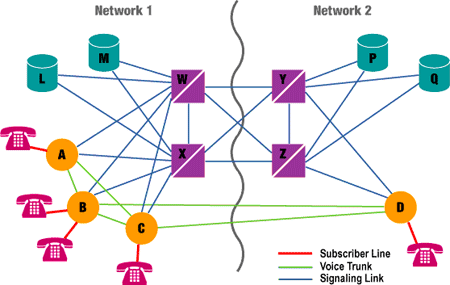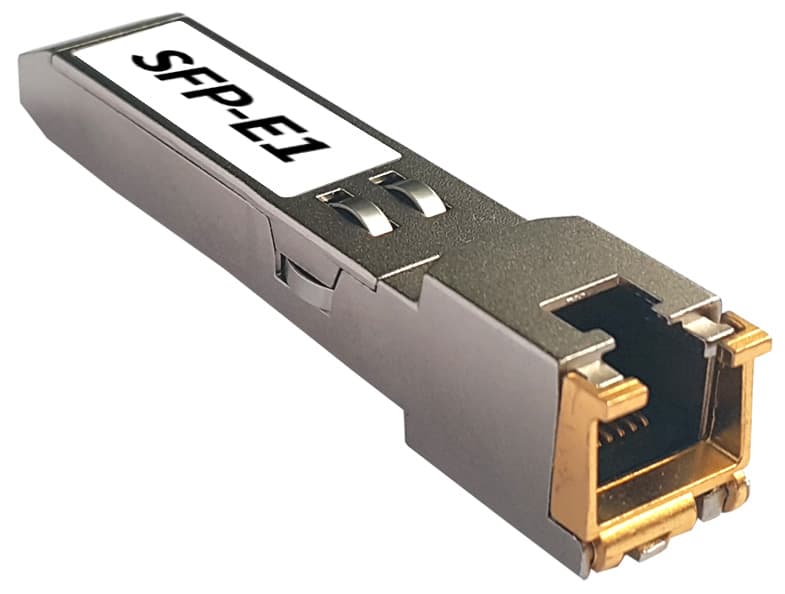Converting SS7 signaling and SIP protocol solves the issue of information exchange in the telephone network and the integration of various telecommunication devices
SS7 is architecture for performing out-band signaling in support of the creation of call billing, routing information exchange functions of the PSTN (public switched telephone network). SS7 is what functions are executed common channel signaling network, as well as what protocols tedious for its successful execution.
How does SS7 signaling?
Alarm – this is the exchange of information between the components call, which provide support and telephony services.
When a PSTN, an exchange of signals with the network elements. This may be done as a set of numbers, to provide an answer station access to the voice channel, to send tone “call waiting”, include automatic redial etc.
Alarm SS7 – a method that will help different elements of the telephone network exchange information with each other. The transfer of information takes place in the form of messages. For example, SS7 signaling may transmit the following information:
I sent to you by calling 212-555-1234 installed to 718-555-5678. Find it in the connecting path 067.
Someone just dialed 800-458-1813. Where I will define the challenge?
Named for the called subscriber connecting path 15 is busy. Implement the call and let the tone of “busy”.
The route to XXX overloaded. Please do not send any – any messages on XXX, if their priority is not greater than 2.
I take a connecting path 173 to operate.
SS7 has high-speed data packets and-of-band signaling.
What of-band signaling SS7?
Of-band signaling – a system, which does not require the same way the connection is established, which is required for the call. Signaling system 7 allows you to install a separate digital channel for the exchange of signaling information. This channel is called a signaling link. The alarm unit is used to carry all the necessary signaling messages between nodes. Thus, the use of the signal level for call set-up, a set of numbers, and redundant transmission paths connecting between switches other better than using tract, which eventually brings about.
Today, signaling information is transferred units at 56 or 64 kbit/s. It is interesting to note that if SS7 only used for signaling between network elements, D-channel ISDN (Digital Integrated Services Network) extends the concept of-band signaling on the interface between the subscriber and the switch. With the service ISDN, signaling to be transmitted between the subscriber station and local switch is transferred by a separate digital channel called the D-channel. Voice or data, which includes the call is transferred to one or more B-channels.
What are the benefits of-band signaling?
Of-band signaling has different advantages that make it preferable to the traditional in-band signaling:
- Supports the transfer of large amounts of data at high speeds (at speed of 56Kbit / s data is transferred much faster than using multi-frequency pulses)
- Can be carried out during the call, not just at the beginning.
- Carries signaling to network elements that do not have a direct connection.
Architecture of SS7
If the alarm will occur on other than a channel on which supports data transfer, then that’s what happens. The simplest case, if one of the routes distributed between each pair of interconnected switches.
To reduce the volume that is occupied signaling traffic between the switches will be transferred with a single link. This type is called associated signaling, and is as follows:
This work will be effective for as long as the need to connect to a switch. If the setup and call control performed as the application of SS7, the alarm would be very simple and effective.
However, installation and management challenge – it’s not the only application SS7. If it was such, the alarm would be very simple and at the same time effective.
Developers want to create an alarm network to it any node can exchange signals with another node. which is compatible with SS7 to SIP. Of course, such signaling has become complex, especially if it is to provide a link between nodes that have no direct connection. To this end, the US decided to create a network of signaling SS7.
How does the northamericans architecture of SS7 works
Developers North America have created a completely new signaling network. It consists of three main components, which are connected to each other via a signaling link:
- SSP – These include telephone switches that support the software that is compatible with SS7. It limited signaling links. Telephone exchanges tend to create, end the call or perform their switching.
- STP – is a network packet switches SS7. Their task is to receive and distribution of signaling messages that arrive at the appointed place. They receive and distribute
- incoming signaling messages to the destination. In addition, the packet switches perform specialized routing functions.
- SCP – databases that provide information necessary to further process the call.
SS7 critical to call processing. While SSP did not exchange signals, they will not be able to realize calls between switches. Therefore, signaling network №7 uses a very complex architecture. Every single element of the alarm must satisfy all the requirements for accessibility. In the end, the protocol defined between interconnected elements to provide routing of signaling traffic, so to circumvent conflicts that can occur in the network.
To transfer was simple and clear, signaling network SS7 to SIP uses a standard set of characters. These characters are used to represent elements of the signaling network SS7.
STP and SCP form pairs. While the elements of the pair are not together, they make unnecessary operations, performing the same logic function. When the image of complex network diagrams, these pairs may be depicted as a single element for simplicity, as shown in Figure 3.
Architecture primary signal SS7
You can see how the main elements of the network SS7 to SIP capable of forming two networks that are connected to each other.

Figure 1. Example networks
We analyze in more detail the following points:
- STP W and X have the same function. Therefore, they need not. Together, they are called the connected pair of STP. Similarly, STP Y and Z are connected to form a pair.
- Each SSP has two links (or set of links) where for each connected pair STP has a separate link. All alarm SS7 in the rest of the world is carried out on these links. Because STP, pairing is not needed, messages are sent from the equivalent link.
- United STP pair formed a link (or set of links).
- Two connected pair STP four interrelated units (or sets of units). These links are called Quartet.
- SCP is usually (though not always) form a pair. As with STP, SCP pairs connected will function identically. Also called SCP pair connected in pairs at the same time, they are not connected directly to a pair of links.
- Signal architecture such as this, which provides indirect routes signaling between network elements provide Quasibound signaling.
How to convert SS7 to SIP, or SS7 conversion to SIP.

